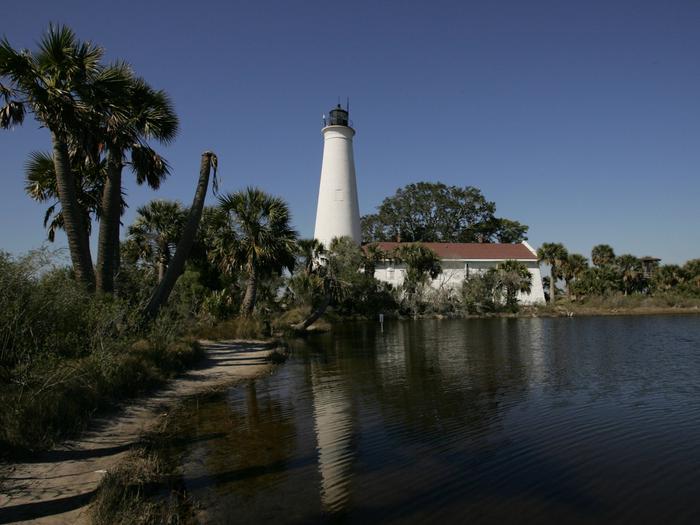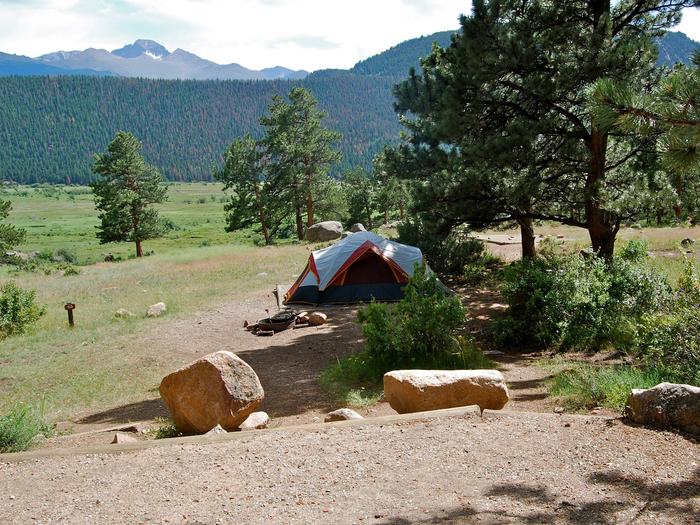Directions
St. Marks NWR is located 25 miles south of Tallahassee, Florida. Take State Hwy. 363 through Woodville to the intersection of State Hwy.363 and State Hwy. 267 (blinking light at this intersection). Turn left onto 267 and drive 4 miles to dead end into U.S.Hwy. 98 (Coastal Hwy). Turn left onto Coastal Hwy. and drive about 1/2 mile, cross over the St. Marks River, and take your first right on Co. Rd. 59 (Lighthouse Rd.). The Visitor Center and most public usfacilities begin three miles down Lighthouse Rd. A 6.8-mile wildlife drive runs from the Visitor Center to the old historic St. Marks lighthouse on Apalachee Bay. Maps and other information are available by calling 850-925-6121.
Phone
850-925-6121.
Activities
AUTO TOURING, BOATING, INTERPRETIVE PROGRAMS, FISHING, HIKING, HUNTING, VISITOR CENTER, WILDLIFE VIEWING
Camping Reservations
Reserve your campsite at these camping areas:
Hiking Trails
Looking for nice hiking areas to take a hike? Choose from these scenic hiking trails:
Related Link(s)
St. Marks NWR, located 25 miles south of Tallahassee along the Gulf Coast of Florida, is a well-known oasis of natural Florida habitats for wildlife, especially birds. Natural salt marshes, freshwater swamps, pine forests and lakes provide a haven for wildlife and people. Fishing, hiking, birdwatching, butterfly-watching, hunting, and viewing the historic St. Marks lighthouse on beautiful Apalachee Bay attract visitors from around the world. Special events highlighting the refuge’s coastal resources, monarch butterflies, wildflowers and migratory birds enhance visitors’ opportunities to learn more about this special place. Established in 1931 for wintering migratory birds, St. Marks NWR has a long tradition of excellent birdwatching. There are over 300 species of birds recorded on the refuge, with 98 species nesting on-site. There are 19 species of ducks and many hawks, falcons, and shorebirds migrating through the refuge in the fall and winter. There are 14 active bald eagle nests and the endangered least tern and red-cockaded woodpecker also nest on the refuge. In the spring, the refuge is a showcase of colors as songbirds migrate north through coastal oaks and shrubs. Wildlife abounds on St. Marks NWR due to the wide diversity of habitats, ranging from wilderness saltmarshes, ribboned with tidal creeks, to rolling longleaf pine forests, with swamps, sinkholes, and palm/oak hammocks in between. Located in Wakulla, Jefferson, and Taylor counties, the refuge spans over 43 miles of coastline and supports 52 species of mammals such as the Florida black bear and bobcat; 40 species of amphibians such as the endangered flatwoods salamander, and 65 species of reptiles. Visitors may glimpse endangered loggerhead sea turtles and West Indian manatees offshore by the lighthouse. State-listed threatened and endangered plants are also found on the refuge. St. Marks NWR’s location also makes it an ideal host for the natural marvel of the migrating monarch butterflies in October on their way to Mexico!






